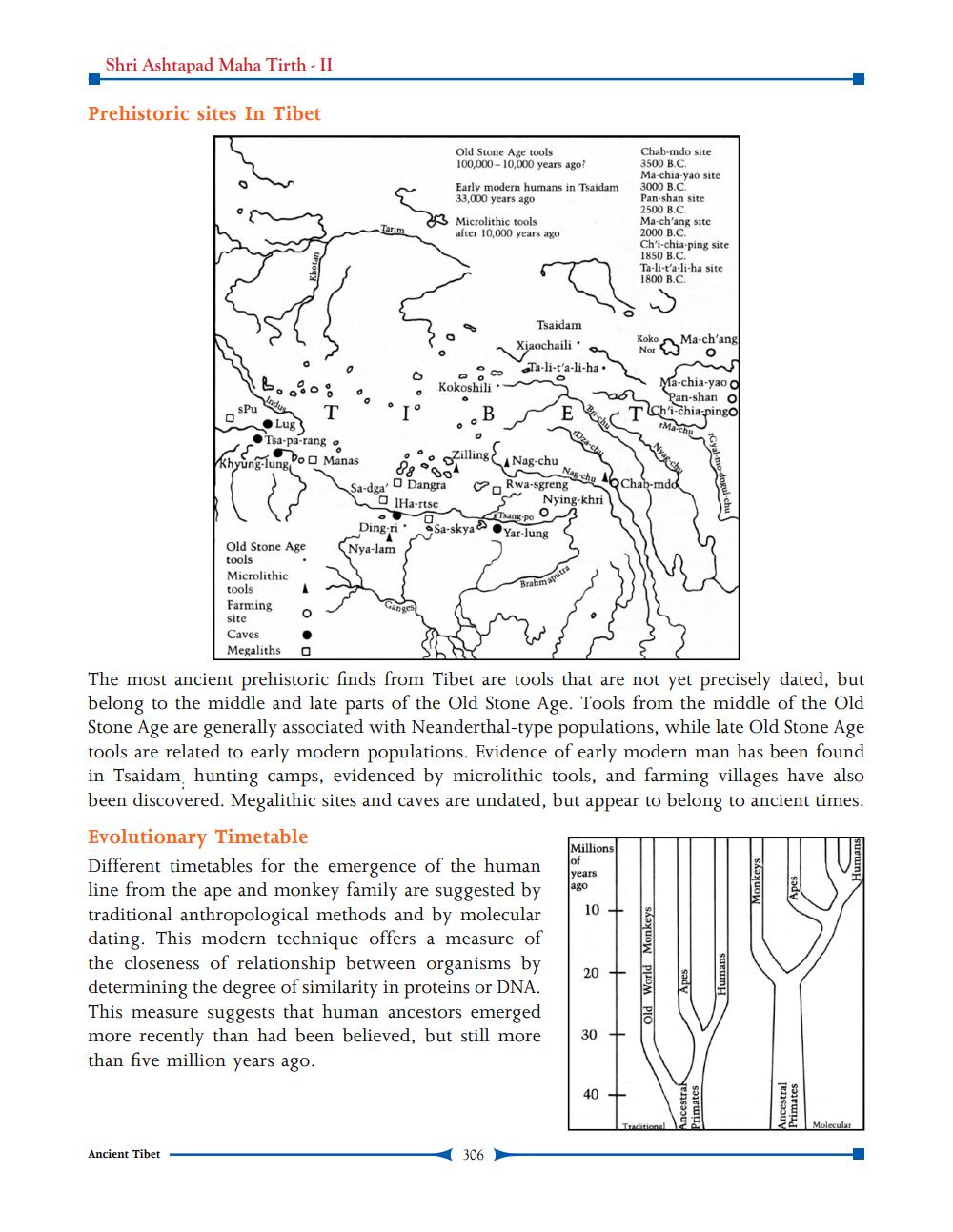________________
Shri Ashtapad Maha Tirth - II
Prehistoric sites In Tibet
Old Stone Age tools 100,000 - 10,000 years ago!
Early modern humans in Tsaidam
33,000 years ago 23 Microlithic tools
after 10,000 years ago
Chab-mdo site 3500 B.C. Ma-chia-yao site 3000 B.C. Pan-shan site 2500 B.C. Ma-ch'ang site 2000 B.C. Ch'i-chia-ping site 1850 B.C. Ta-li-t'a-li-ha site 1800 B.C
Tarim
Tsaidam Xiaochaili'on
Koko Nor w
Ma-ch'ang
O
°
O
Ta-li-t'ali
• Kokoshilin g
Ma-chia-yao d
O
.O
no
seanshan a
1°
spuden T
Lug Tsa-pa-rang
:B r
E
T
e
T
cta con la singo
Ch'i-chia-pingo
Machy
kkhyung-lung bo Manas
08 Sa-dga' Dangra
Nag-chu
Nag-chu 16 Chab
Gyal-mo dogul chu
W
Rwa-sgreng 16 Chab5 Nying-khri sang-po 0 2 Yar-Jung
IHa-rtsc
O
Ding-ri.
Sa-skya
Old Stone Age
Roam
Susakyan gyar lung §
1.6
Nya-lam
Old Stone Age tools Microlithic tools Farming
site
Caves
Megalithso The most ancient prehistoric finds from Tibet are tools that are not yet precisely dated, but belong to the middle and late parts of the Old Stone Age. Tools from the middle of the Old Stone Age are generally associated with Neanderthal-type populations, while late Old Stone Age tools are related to early modern populations. Evidence of early modern man has been found in Tsaidam hunting camps, evidenced by microlithic tools, and farming villages have also been discovered. Megalithic sites and caves are undated, but appear to belong to ancient times. Evolutionary Timetable
Millions Different timetables for the emergence of the human line from the ape and monkey family are suggested by traditional anthropological methods and by molecular dating. This modern technique offers a measure of the closeness of relationship between organisms by determining the degree of similarity in proteins or DNA. This measure suggests that human ancestors emerged more recently than had been believed, but still more than five million years ago.
Humans
years ago
Monkeys
10
Old World Monkeys
Apes
Humans
Ancestral Primates
Ancestral Primates
Ancient Tibet
306




